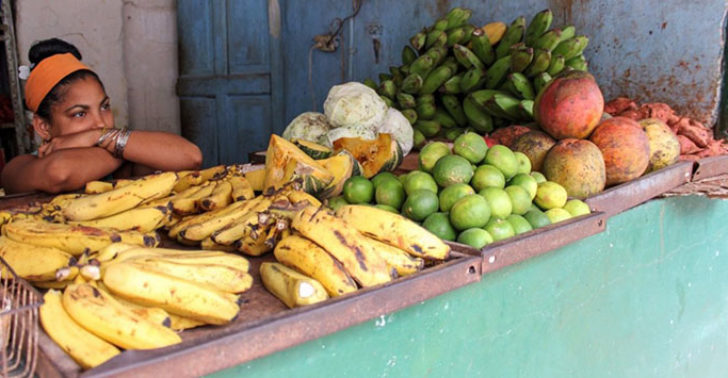
The GNP, the house and the table
HAVANA — In a memorable routine by the Argentine comedians Les Luthiers, a character delivers a long and beffudling speech about seamanship or something like that. His interlocutor opens his eyes wide and asks “So, what’s for dessert?”
The Cuban version would be “What do you eat THAT with?”, a phrase someone uses when an argument doesn’t match his concrete existence. It seems that many people react this way when reading the long explanations given by the government at every year’s end for the production results, increases and declines, plans and external conditions.
Take, for example, the 1.6 percent rise in the Gross National Product. At first glance an astounding figure, taking into account the effects of a hurricane that left us practically naked, among other calamities. But anyway, 1.6 percent more … of what? Not only is the increase small, but it’s also built on a narrow base. In other words, we produced the same as last year, maybe a bit more, but what we produced in 2016 was already below expectations (minus 0.9 percent). That’s why the increase is invisible.
Something similar occurs with the output of agriculture — 3 percent higher. The high prices and the instability of production confirm that no, that’s not enough. On the other hand, the 2.8 percent increase in the construction sector includes the reconstruction done after Hurricane Irma. Simply put, we had houses that blew away and we built in order to have the same houses. That puffs up the final number.
With our national industry both obsolete and depressed, most of the consumer goods are imported or need raw materials and supplies purchased abroad. But in 2017 imports were reduced by $1.5 billion.
That accounts for the shortages in stores, the lack of detergents or toilet paper — even matches. And this means that, when such products “appear,” we see serpentine queues, hoarding and speculation.
The proud announcements of fulfilled plans can also elicit vain enthusiasm. In many cases, the plan (rug manufacturing, for instance) is established in terms of the productive capacity, not of the demand. If the demand is great and the productive capacity is insufficient — as usually happens — there will not be enough for all of us, or we’ll get less of what we need/want.
Often, talking about the economy and daily problems — synonyms, almost — someone asks, “Well, how’s the situation?” to which I –more practical than optimistic — always respond “How do you see it?”
Still, positive elements do exist. First, the payment of the debt renegotiated with our main creditors. The nation is making Herculean efforts to honor those commitments, which has a salutary effect on the international credibility of the Cuban economy (read: if we don’t pay now, nobody will give us credit later.) However, the more immediate impact is a suction of millions of dollars, money that disappears forever.
The same happens with foreign investment. Last year, pacts were signed for about $2 billion, but that amount is for projects that were just approved, are on the paperwork stage, or taking their first steps. Time will pass before those enterprises begin to produce fruit.
What challenges comprehension and predictions is the paralysis in the granting of licenses for private work. Still frozen are the most profitable activities — because the licenses for Button Coverer or Wood Chopper have not yet been approved. This paralysis not only has strictly economic consequences but also affects the lifetime projects of many people and their more-or-less positive or negative vision of the nation’s present and future.
And because “things” are what they are, the strategies for survival are left to the individual, to the narrow confines of the family, the home. Simple reproduction becomes complex, maybe not as dramatically as in the 1990s but just as debilitating.
Even when wages rise, they’re not very useful if prices also rise, in a diabolical chicken-and-egg cycle. In a sense, we should prioritize the perception that “one works to eat,” because just staring at those trees keeps us from seeing the forest.


